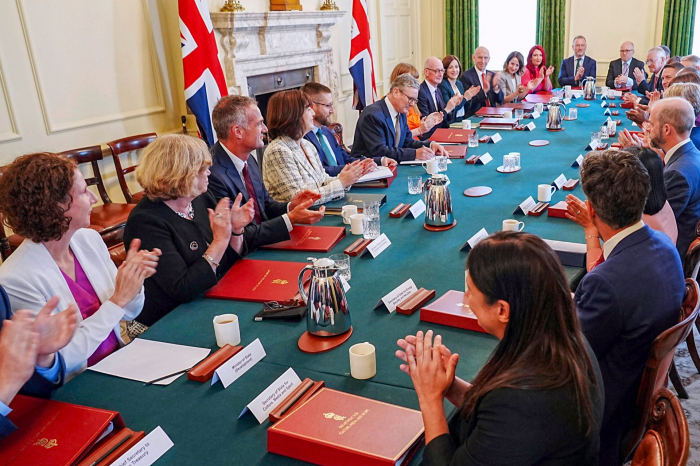The nerve center of the British government is in line for a major overhaul, under plans for a huge cost-saving drive potentially affecting thousands of officials’ jobs.
The Cabinet Office, which supports the work of the prime minister and his top team, would be scaled back from its size of around 10,000 officials to a core of perhaps as few as 1,500, under proposals being studied by ministers, and shared with POLITICO.
The reform has not yet been fully agreed inside Keir Starmer’s new Labour administration, but hundreds of jobs in the government’s digital service have already been moved out of the Cabinet Office to the science and technology department.
The aim is to streamline the way government departments work, reversing measures taken by the Conservatives during David Cameron’s premiership a decade ago, in an effort to deliver budget savings.
Chancellor Rachel Reeves set out in a statement to Parliament last week how she is seeking efficiencies in Whitehall in an effort to balance the books, arguing that the Tories had left an unpaid bill for public servants’ wages of £9 billion.
She said: “The first difficult choice I am making is to ask all departments to find savings … totalling at least £3 billion.” Among spending lines facing the ax are fees for external consultants, which costs the taxpayer hundreds of millions of pounds a year, and all non-essential spending on communications. “I am taking action to ask departments to find 2 percent savings in their back office costs,” Reeves added.
During the Conservative-Liberal Democrat coalition of 2010-2015, Cameron’s minister Francis Maude attempted to centralise “back office” operations across government in the Cabinet Office. These included digital services, property administration, and procurement. The aim was to make Whitehall — as the independent civil service and government departments are collectively known — more efficient and to save taxpayers’ money.
But the reforms apparently backfired, as individual government departments did not want to give up control over the functions they were supposed to hand over to the Cabinet Office.
The result was “vast amounts of extra bureaucracy and duplication,” according to one person familiar with the proposed overhaul. “There is a very significant streamlining planned.” The functions that were centralized under Cameron and Maude may be returned to their original departments.
Back to the future
If ministers agree to the plans, the Cabinet Office may be reduced to its core functions of supporting the prime minister and the cabinet, along with handling national security and intelligence coordination, as well as ethics and standards. That will likely see it reduced to between 1,500 to 2,000 staff, under the proposals. It had around 10,000 staff before the changes that were announced last month.
“Our entire focus is on the work of delivering change, and supporting the Civil Service with the necessary tools to ensure it can deliver that for working people," a Cabinet Office spokesperson said.
The proposals were sketched out internally before the July 4 election which saw the Conservatives ousted and replaced by Starmer’s Labour.
The new government has been studying the plans and last month Starmer announced the first phase, moving digital services into the department for science and technology. If ministers approve the full shake-up, it is likely to take 12-18 months before the reforms are completed.
Politico
More about:















































